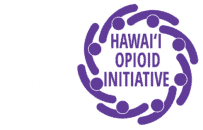BUSINESS
Employers must take action. Find information and resources for employers to share with their employees on the dangers of prescription drug abuse in the workplace and what you can do.
A Growing Epidemic
Prescription painkiller abuse is a growing epidemic affecting workers from all industries and all types of jobs. As workplaces all over the country see an increase in employees impacted by addiction to prescription opioids, human resources professionals continue to look for the best way to fight this epidemic. It’s difficult for an employer to navigate, since most employees using prescription painkillers have obtained them lawfully with a valid prescription. However, it is important for employers to understand the negative impacts of the issue, and what they can do about it.
$26 billion/year:
The amount employers lost from consequences of prescription pain medication abuse, including absenteeism, diminished productivity, and lost earnings from premature death (source: National Business Group on Health’s Employers Guide to Workplace Substance Abuse 2009).
$1.4 billion/year:
What workplace insurers (i.e., Worker’s Compensation program underwriters) spend on narcotic and opioid painkillers (source: The New York Times June 2012).
9x higher:
The overall cost to treat a workplace injury when a narcotic painkiller is prescribed (source: Accident Fund Holdings).
4 out of 5:
The number of employers that have had to deal with opioid prescription addiction and abuse in their workplace (source: National Safety Council study of Indiana employers December 2015).
What Employers Can Do
First, consult your human resources professional and/or legal counsel before you do anything. This is where civil rights, the Americans with Disabilities Act (ADA), the Age Discrimination in Employment Act (ADEA), the Family Medical Leave Act (FMLA), and many state protections come into play. Although federal and state laws limit your options in addressing prescription drug use in the workplace, that doesn’t mean you can afford to do nothing.
Here are some steps for employers to take:
Evaluate or re-evaluate your company’s drug policy.
Your company has the right to provide a drug-free workplace. However, your drug-free workplace policy might only currently address illegal drugs. With the increased use of narcotic and opioid prescription painkillers, you should revisit these policies and update them in tandem with human resources and legal counsel.
Consider including prescription medications in your company’s drug testing program.
Drug tests can be perceived as being highly intrusive, but they can be invaluable tools for preventing drug-related incidents and reducing risk, according to the National Safety Council. In several safety-sensitive industries, in addition to the industry-standard Department of Transportation panel, employers are also testing for prescription medications such as barbiturates (pentobarbital, butabarbital), benzodiazepines (alprazolam, diazepam), synthetic opiates (hydrocodone, hydromorphone, and oxycodone), propoxyphene (although this drug is no longer manufactured), and methadone. A relatively new trend is also the addition of buprenorphine (suboxone).
Educate employees about the dangers of prescription painkiller use and misuse.
According to the National Safety Council, employees should know:
- To discuss concerns about taking prescription narcotic and opioid painkillers with their prescribing
medical professional and ask for a non-narcotic alternative. - What state law says about driving while using prescription drugs. In Wisconsin, you can be cited
and/or arrested for drugged driving, even if you are under the influence of a legitimately prescribed
medication. - The risks of taking painkillers while performing safety-sensitive tasks.
- How to safely store and dispose of prescription painkillers.
- Never to take someone else’s prescribed painkillers or share theirs with anyone else.
- For men, drug overdose deaths involving opioids were highest among young adults aged 25-34, and
among women aged 35-54.
Train supervisors and managers.
Make sure they know the company’s current drug-free workplace and drug-testing policies and any updates as they’re made. Train them to recognize the potential signs of drug impairment, and the proper steps to take if they suspect an employee is impaired.
Source: (Wisconsin Dose of Reality)
